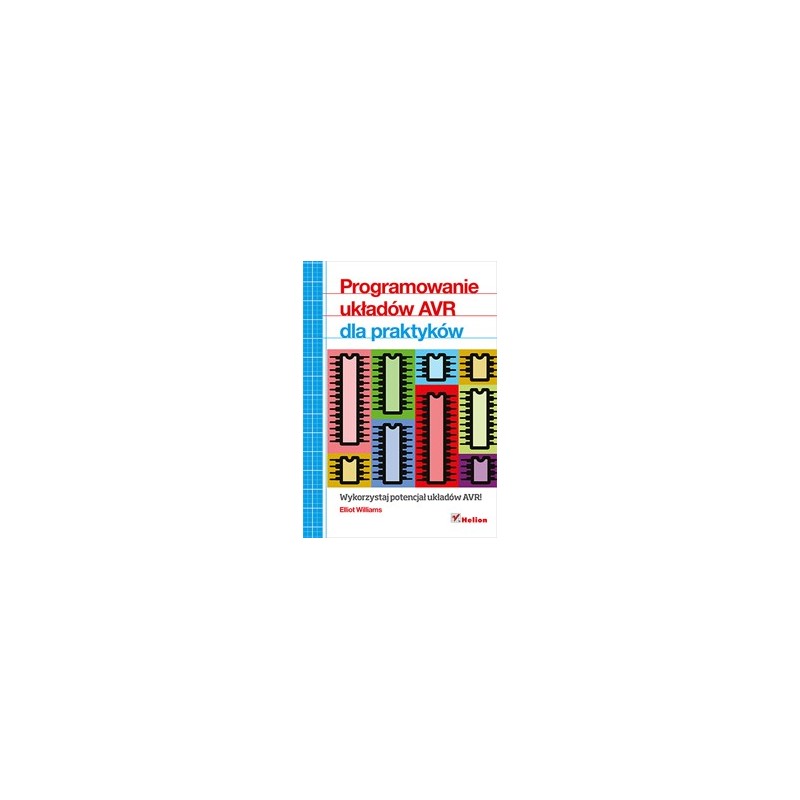- Out-of-Stock

AVR programming for enthusiasts!
The modern world of electronics is conquered by the Arduino system. It is supported by convenience and simple creation of quite advanced projects. However, if you require the highest performance, real-time or multi-tasking response, it's worth taking the next step and getting to know Atmel's AVR systems. It sounds inviting?
Perfectly! We give you a book in your hand that will allow you to get to know the exciting world of these systems. In the following chapters, you will learn to use their potential to write your own C language programs and communicate with the outside world. In addition, you'll learn how to use serial communications, digital inputs and hardware interrupts. Finally, in the section devoted to advanced issues, you'll see how to use switches and the I2C protocol and control the engines. This book will be useful for all electronics enthusiasts who want to discover the potential of AVR circuits.
Thanks to this book:
Take advantage of the potential of AVR chips!
Table of Contents
Introduction (11) PART I. BASIS 1. Introduction (19)
2. AVR programming (29)
3. Digital outputs (55)
4. Manipulations on bits (69)
5. Serial entry and exit (85)
6. Digital inputs (109)
7. Analog-to-digital converter - part 1. (129)
PART II. AVERAGE ADVANCED 8. Hardware interrupt (155)
9. Introduction to the hardware clock / meter (175)
10. Pulse width modulation (197)
11. Servo motor control (213)
12. Analog-to-digital converter - part 2. (237)
PART III. ADVANCED TOPICS 13. Advanced tricks with PWM (263)
14. Switches (279)
15. Advanced motor control (295)
16. SPI (325)
17. I2C (347)
18. Using program memory (367)
19. EEPROM (399)
20. Applications, farewell and encouragement (421)
Index (425)
A small USB splitter allowing to connect up to 4 USB devices, powered from the USB port
No product available!
No product available!
USB converter module - FIFO, FT245 with USB A and goldpin connector
No product available!
No product available!
No product available!
No product available!
No product available!
No product available!
No product available!
No product available!
No product available!
Graphic LCD 128x64, FSTN, LED backlight (white), enhanced temperature range, PCB 93x70mm, RoHS
No product available!
No product available!
USB WiFi adapter with external antenna based on RTL8188CUS-GR system in accordance with 802.11 b / g / n standards (up to 150 Mbps), operates on 2.4 GHz frequency. The card works with Odroid HC2 / HC1 / XU4 / C2 / C1 + / C0 computers
No product available!
No product available!
No product available!

Elliot Williams
